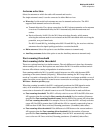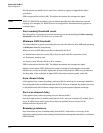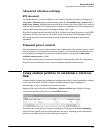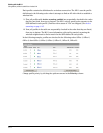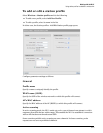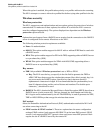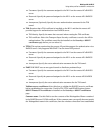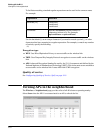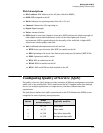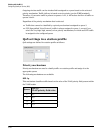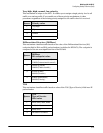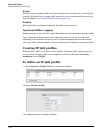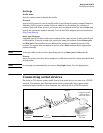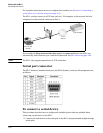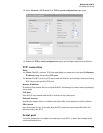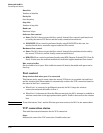
Working with the M111
Configuring Quality of Service (QoS)
3-19
Field descriptions
MAC address: MAC address of the AP (Also called the BSSID).
SSID: SSID assigned to the AP.
Mode: Indicates the operating mode of the AP: A, B, or G.
Channel: Channel the AP is operating on.
Signal: Signal strength.
Noise: Amount of noise.
SNR: Signal to noise ratio. Signal to noise ratio (SNR) Indicates the relative strength of
radio signals versus radio interference (noise) in the radio signal path. In most
environments, SNR is a good indicator for the quality of the radio link. A higher SNR
value means a better quality radio link.
Info: Additional information about the AP, such as:
WEP: Some type of security (like WEP) is enabled on the AP.
ESS: Operating in AP mode. Also lists security being used if enabled (WEP, WPA).
IBSS: Operating in Ad-Hoc mode.
WPA: WPA is enabled on the AP.
WPA2: WPA2 is enabled on the AP.
WPA*: WPA and WPA2 are both enabled on the AP.
Configuring Quality of Service (QoS)
The quality of service (QoS) feature provides a number of different mechanisms to prioritize
traffic sent on the wireless link. This is useful when the M111 handles traffic from multiple
devices (or multiple applications on a single device), that have different data flow
requirements.
The QoS feature defines four traffic queues based on the Wi-Fi Multimedia (WMM) access
categories. In order of priority, these queues are:
Queue
WMM
access category
Typically used for
1
2
3
4
AC_VO
AC_VI
AC_BE
AC_BK
Voice traffic
Video traffic
Best effort data traffic
Background data traffic



